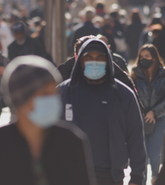On March 10, 2021, in Oslo, Norway, the Coalition for Epidemic Preparedness Innovations (CEPI) – a global partnership between public, private, philanthropic, and civil society organizations – launched a five-year US$3.5 billion plan to dramatically reduce the future risk of pandemics and epidemics. This plan is immensely important for society, and for the development of a viable future pandemic business interruption insurance market.
The significance of this initiative for the insurance industry may be illustrated by reference to the terrorism insurance market after 9/11. In the aftermath of the attack on the World Trade Center in New York, terrorism risk was widely perceived to be uninsurable. This is now the case with the insurance industry and pandemic business interruption risk after the COVID-19 lockdowns.
Whatever steps may be taken by individual businesses to protect themselves against terrorism or infectious disease, risk suppression requires government action at both national and international levels. Since 9/11, international counterterrorism action to dismantle terrorist networks and interdict terrorist plots has been very successful at suppressing terrorism risk. In September 2013, I testified to the U.S. Congress on terrorism risk modeling and remarked that terrorism insurance is, effectively, insurance against the failure of counterterrorism.
The COVID-19 vaccine rollout in 2021 demonstrates that the availability of effective vaccines is essential for suppressing pandemic risk. In some respects, insurance for long-term pandemic business interruption is effectively insurance against the failure of vaccine development. This is why the CEPI initiative is so crucial for insurers.
The ambitious six-point plan outlined by CEPI is as follows:
- Strengthen defenses against COVID-19, and reduce the risk of future coronavirus pandemics
- Develop vaccines for known threats, including chikungunya, Lassa fever, Nipah virus, and MERS (Middle East respiratory syndrome)
- Work to compress vaccine development timelines to 100 days by optimizing the capabilities of rapid-response platforms including mRNA, preparing clinical trial networks to respond rapidly to new threats, liaising with global regulators, and enabling rapid production of vaccines
- Produce a library of prototype vaccines against representative pathogens from critical viral families
- Establish global networks for lab capacity, assays, and preclinical models
- Support the effort of low- and middle-income countries to take full ownership of their national security
Rapidly responding to new threats is vital. The time from the release of the SARS-CoV-2 genetic sequence in January 2020 to the submission of the Pfizer-BioNTech phase three clinical trial data for regulatory review was just 314 days. On December 11, 2020, 11 months after the genetic sequencing, the U.S. Food and Drug Administration (FDA) issued the first emergency-use authorization for a COVID-19 vaccine.
But, counterfactually, if a COVID-19 vaccine had been rolled out six months earlier, within a 100-day vaccine development timeline, this would have helped to minimize any second or third waves of infection.
The insurability of business interruption risk requires the sharing of costs and responsibilities across the public and private sector. A key cost factor is the US$3.5 billion funding of this newly launched CEPI initiative. This seems a modest price for the dramatic reduction in pandemic risk that CEPI expects and would help close the current wide insurance gap for pandemic risk cover. Vaccine risk mitigation is a key factor in the modeling of pandemic insurance risk, which was pioneered by RMS® in 2006.
In 1999, the U.S. Centers for Disease Control and Prevention (CDC) acclaimed vaccination as the number one great public health achievement of the twentieth century. This new initiative will ensure its ranking in the twenty-first century, and its key role in the insurance of pandemic risk.







